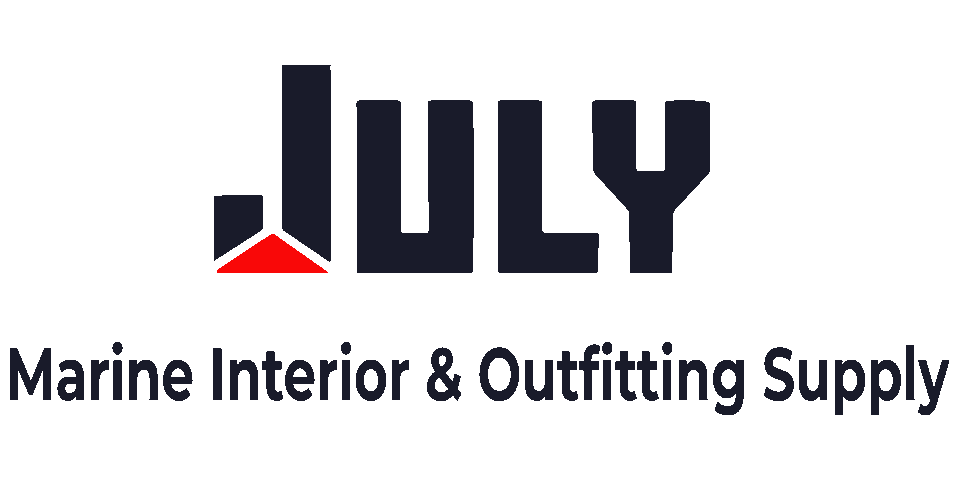Marine-grade aluminum interior wall panels
Marine-grade aluminum interior wall panels are resistant to the influence of corrosion, but do not require to have special alloys added because they are not constantly exposed to water and seawater.
These aluminum interior wall panels are with marine grade 3003 the most preferred. They have a high level of corrosion resistance. Pure aluminum has a high natural resistance to corrosion compared to many other metals, but when exposed to water and moisture in marine applications aluminum can be alloyed with other metals like magnesium (Mn). These specially treated aluminum alloys are known as marine-grade aluminum.
But the treatment of the aluminum has an impact on the characteristics of the sheets as this post will explain.
What is the difference between marine grade aluminum and regular aluminum?
Aluminum is a material invented for the marine and offshore industry, thanks to a combination of light weight, corrosion resistance and strength. This makes it easy weldable combined with a high fatigue strength.
Special alloys are added to the regular aluminum to enhance certain aluminum properties like corrosion resistance resulting in marine-grade aluminum.
Marine-grade aluminum comes in various alloys with differing abilities to respond to various mechanical and thermal treatments, this way the marine-grade aluminum sheets can be used for different applications. The following aspects are relevant for the composition of the aluminum sheets:
- Interior or external use, what level of resistance to corrosion
- Shape or format, available in plates, sheets, and extrusions
- Mechanical use, lightweight with a high strength-to-weight ratio
Some examples of regular aluminum enriched with different alloys, next to the Al-Mn alloys 3XXX (3003) there are:
AL-SI ALLOYS – 4XXX
Aluminum silicon alloys are highly fluid, wieldable and castable. The alloys are moderately strong and perfect for various applications like engine blocks. With the addition of other alloys like copper and magnesium, this alloy can also be used as a weld filler material.
The Al-Si alloy is often used for leak and fatigue-resistant castings and in making vital components for marine applications.
AL-MG ALLOYS 5XXX
Aluminum-magnesium alloys are not heat treatable and are hard to cast. However, they have a high resistance to corrosion and are best suited for components that are regularly exposed to seawater.
There are also wrought aluminum alloys which include aluminum alloys 5052, 5083, and 5754 which are also non-heat treatable but are easily wieldable and possess the same excellent corrosion resistance that can keep up with the demands of marine waters.
The wrought aluminum alloys class of alloys handles well even in cryogenic temperatures, is moderately strong and is strain hard enable.
AL-MG-SI ALLOYS -6XXX
This class of aluminum alloys is best known for its decorative and structural properties with excellent finishing characteristics. It’s often used as an architectural alloy for various interior and exterior projects.
Aluminum-Magnesium-Silicon alloys are heat treatable, moderately strong, extrudable and highly corrosion resistant.
What is the difference between marine-grade aluminum 3003 and 5052?
For most marine interior wall panels, marine grade aluminum 3003 is the preferred option. Both for quality and pricing. Both grade 3003 and grade 5002 aluminum, are the most widely used in the marine industry, and are known as “common alloys”. The difference between the two are important to know.
The composition of the aluminum
When analyzing the chemical compositions of grade 3003 and 5052 they look rather similar.
The grade 3003 is primarily alloyed with Manganese (Mn) for 1 to 1.5 percent. The manganese allows for the formation of grains that absorb impurities and prevent corrosion.
The primary alloy ingredient for 5052 is Magnesium (Mg). Magnesium overcomes the corrosive effects of the iron present in the alloy.
Grade 3003 is an alloy of Silicon (0.6%), Iron (0.7%), Copper 0.2%), Magnesium (1-1.5%), and Zinc (0.1%). Grade 5052 is an alloy of Silicon (0.45%), Copper (0.1%), Manganese (0.1%), Magnesium (2.2%), Chromium (0.15%), and Zinc (0.1%).
THE CHARACTERISTICS OF THE 3003 AND 5052
The grade 3003 is the most preferred marine-grade aluminum sheet of the industry, this grade has about 20% more strength than pure aluminum. The material is soft, moderate strength and is weldable. This grade has a good corrosion resistance. The 3003 is cheaper than the 5052 variants but has a higher density (0.099 pounds per inch).
The 5052 is stronger and has a better corrosion resistance, excellent formability, and a higher strength.
Marine grade aluminum vs stainless steel
A very known difference is aluminum is lighter than steel, this brings significant advantages in energy efficiency and a lower carbon footprint. Thanks to the higher density stainless steel is stronger than aluminum.
Both marine grade aluminum and stainless steel contain components that are resistant for corrosion. For stainless steel that is chromium.
What is the best marine grade aluminum for your project?
July Marine can provide any marine grade aluminum sheets, call our team to discuss your marine or offshore project and we advise you about the best marine grade aluminum for your next project.






